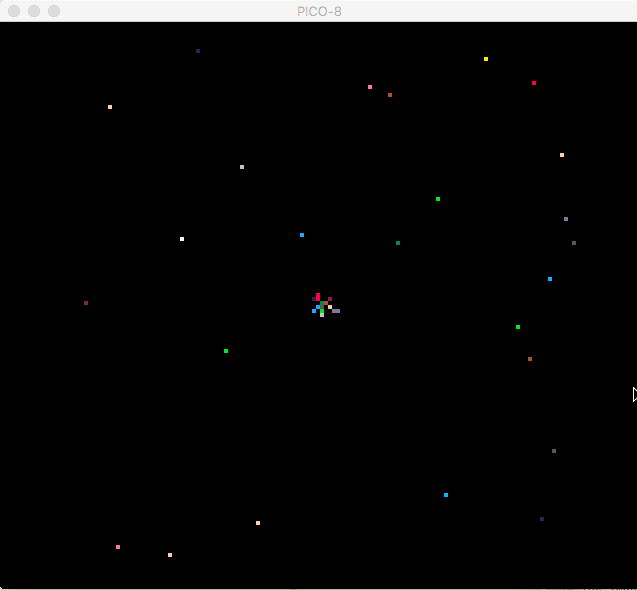Erik Hollembeak
PICO-8 Sketches No. 1

PICO-8 bills itself as a “fantasy console”, a modern implementation of a microcomputer like the BBC Micro or the ZX Spectrum affording many of the interesting design constraints of these microcomputer like limited screen resolution, tiny program size, and sprite-based graphics but with the benefit of being programmable with a subset of a modern high-level language, Lua.
The above animation is a demo I put together in about an hour modeling Diffusion-limited Aggregation. This short course on simulation was helpful to getting a grounding in the topic. I was initially inspired by a beautiful low-resolution Mandelbrot set visualizer that ships with PICO-8 as a demo program. DLA-based visualizations can be quite beautiful, but some of that dendritic beauty seems to be lost in a 128x128 screen.
Something interesting to note is that even with this incredibly small demo, the computational complexity of doing a naïve collision detection algorithm between particles and the aggregate makes for a choppy rendering experience as aggregated particles accumulate. The linked “Simulation and Nature in Design” course hints at a number of straightforward methods for addressing this – I suspect something as basic as keeping track of a bounding box around the central aggregate and only testing for collisions if inside the box would go a long way to improving the framerate. You could get more sophisticated and keep a Binary Space Partition data structure, but that feels a bit sophisticated for something with a LoFi aesthetic.